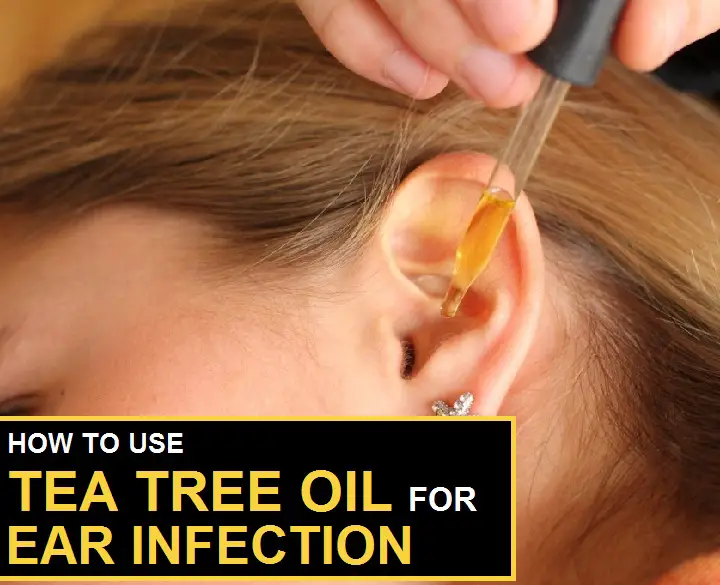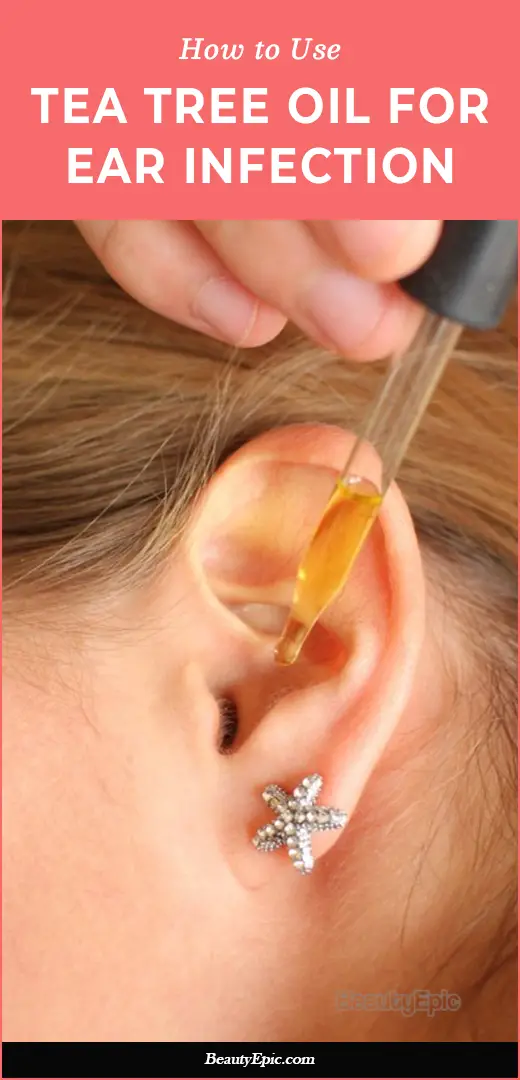
Important: This article is for informational purposes only. Please read our full disclaimer for more details.
Ear infections are caused directly or indirectly due to the presence of bacterial, fungal or viral overgrowth in the ear. Ear infections are usually characterized by a strong pain in the ear canal. The role of tea tree oil for ear infection is pointed out in this article.(1)
How Effective is Tea Tree oil for Ear Infection?
- Tea tree oil reduces the growth of infection causing agents such as bacteria and fungus.
- Tea tree oil has anti-inflammatory in nature which helps in the reduction of pain caused by infections.
- It helps in clearing dirt and excess wax from the ear canal- all of which make it an excellent therapy for curing ear infections.(2)
How to Use Tea Tree Oil for Ear Infection?
Tea tree oil, as the name suggests, is the oil derived from the tea tree plant. A number of research studies have proved the role of tea tree oil as an anti-microbial agent. It has a number of medicinal benefits as it helps in diseases caused by bacterial and fungal infections.
1. Tea Tree oil and Water for Ear Infection

You’ll need:
- 3 drops of tea tree oil
- warm water
- cotton swab
Preparation time: 2 minutes.
How to do:
- Mix tea tree oil in warm water.
- Use a dropper or a cotton swab to add this mixture into the affected ear canal.
- Lie keeping that side vertical for about 5-7 minutes and then let the excess liquid drain out.
Repetitions: Repeat regularly till the infection is cured.
[ Read: Essential Oils for Ear Infection ]
2. Tea Tree oil and Olive oil for Ear Infection
You’ll need:
- 1/4th cup of olive oil
- 3 drops of tea tree oil
- dropper
Preparation time: 3 minutes.
How to do:
- Warm olive oil and add tea tree oil to it.
- Use a dropper to add this solution to the affected area.
- Lie keeping that side vertical for about 3 minutes and repeat for the other ear.
Repetitions: Repeat the above process regularly till the infection is cured.
[ Read: How to Use Olive oil for Ear Infection ]
3. Rubbing Tea Tree oil on Ears

You’ll need:
- 3 drops of tea tree oil
- 1 tablespoon of warm water or olive oil
- cotton swab
Preparation time: 3 minutes.
How to do:
- Mix tea tree oil with warm water or olive oil.
- Pour 2 drops into the affected ear and place a cotton swab on the ear opening.
- Rub gently to help relieve the pain.
Repetitions: Daily.
[ Read: How to Cure Ear Infection with Garlic ]
4. Tea Tree oil and Lavender for Ear Infection
You’ll need:
- 5 drops of tea tree oil
- 1 drop of apple cider vinegar
- 2 tablespoons of olive oil
Preparation time: 5 minutes.
How to do:
- In a bowl add tea tree oil, apple cider vinegar and olive oil.
- Use a dropper to add this solution to the ear and leave it in for 5 minutes.
- Drain the excess liquid and repeat for the other ear.
Repetitions: Follow the above process daily once.
Tips and Precautions:
- Tea tree oil can be used alone or in combination with a number of different naturally available ingredients to cure ear infections but if tea tree oil or any of the other ingredients you are planning to mix do not suit you it is best to avoid doing it.
- It is also best to consult a doctor before starting the remedy if you are taking any prescription drugs or suffer from an allergy.
- Tea tree oil is a liquid hence it is always advised to clean the ear thoroughly after treatment otherwise it could cause further infection.
- To avoid further infection, tea tree oil can be used frequently; however the concentration of tea tree oil needs to be taken into consideration. If very concentrated, it is best to dilute it with a little water or carrier oil.
Excessive use of tea tree oil can cause nausea, headaches, skin allergies, rashes and vomiting.
You Might Also Like:
- Ear Mites in Humans: Symptoms and Treatments
- Can Olive Oil Remove Wax or Treat an Earache?
- How to Cure an Earache Fast at Home with Onion
- How To Use Sweet Oil For Earache Relief
- How to Treat Earache With Tea Tree Oil?
- How to Use Apple Cider Vinegar for Earaches Relief?
- How to Clean Ears With Hydrogen Peroxide
- Why Do My Ears Get Hot and Red Suddenly? Causes and Treatment
- Why Do Older Adults Wake Up Early? Understanding and Easing Age-Related Sleep Shifts
- 8 Simple and Effective Home Remedies for Earache
- How to Use Breast Milk for Ear Infection
Image:- 1
















